
Epyaxa lucidata is a species of moth in the family Geometridae. It is endemic to New Zealand.

Helastia cinerearia is a moth of the family Geometridae. It is endemic to New Zealand and can be found in the North, South and Stewart Islands as well as on the Mercury and Chatham Islands. The preferred habitat of H. cinerearia includes urban gardens, various types of forest and sub alpine habitats. The larval host is lichen on rocks. The adult moths are on the wing all year round but are most commonly observed from September until February. Adult moths are nocturnal and have been observed feeding from and likely pollenating Hebe salicifolia, Hoheria lyallii and Leptospermum scoparium.

Asaphodes adonis is a species of moth in the family Geometridae. It is endemic to the South Island of New Zealand. It is found in native forest at altitudes of between 300 and 1200 metres. Larvae have been reared on species of Ranunculus. Adults are on the wing in January and February.

Asaphodes chlorocapna is a species of moth in the family Geometridae. This species is endemic to New Zealand and can only be found in the Chatham Islands. The larvae of this species consume the leaves of Muehlenbeckia plants. Adults are on the wing in January. This species is classified as "At Risk, Relict'" by the Department of Conservation.

Helastia angusta is a moth of the family Geometridae. This species is endemic to New Zealand and has been observed in the Mackenzie and Otago Lakes districts of the South Island. The preferred habitat of this species is montane areas. Adults have been observed on the wing from October until December. As at 2000, the larval host species is unknown. It is classified as "At Risk, Relict'" by the Department of Conservation.

Helastia clandestina is a moth of the family Geometridae. This species is endemic to New Zealand and is found only in the South Island in and around Arthur's Pass. Adults have been collected on the wing in February and are nocturnal. Its preferred habitat is dry stony riverbeds and flood plains. The glossy blueish grey colouration of the adults of this species helps camouflage them against the rocks in their preferred habitat. H. clandestina is classified as having the conservation status of "At Risk, Relict'" by the Department of Conservation.
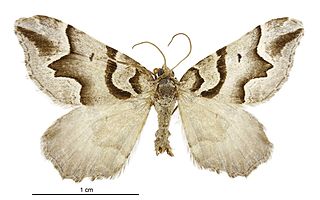
Helastia expolita is a moth of the family Geometridae. This species is endemic to New Zealand and occurs in the Bulle, Marlborough, North and Mid Canterbury regions.This species inhabits short tussock grassland in montane to subalpine zones. Adult moths are nocturnal but little is known about the life history of H. expolita. Adults have been observed on the wing in November. It has been hypothesised the larvae of H. expolita feed on the flowers of Helichrysum species and then feed on mosses, lichens or shrubs growing nearby. It is classified as "At Risk, Relict'" by the Department of Conservation.
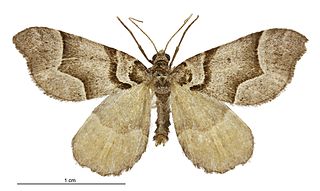
Helastia siris is a moth of the family Geometridae. This species is endemic to New Zealand. It is classified as "At Risk, Relict'" by the Department of Conservation.

Asaphodes citroena is a species of moth in the family Geometridae. This species is endemic to New Zealand and has been collected in Westland. It inhabits native forest and scrub and has also been collected in open spaces along riverbeds. Adults are on the wing in December and January.

Asaphodes dionysias is a species of moth in the family Geometridae. This species is endemic to New Zealand and is only known from mountainous areas in Central Otago. It lives in open grassy mountainous habitat at altitudes up to 1750 m. It is also known to live in wetland habitat. The larvae of this species feed on native herbs. The adults of this species are on the wing in January and February. The adult female of the species has reduced wing size in comparison to the male.
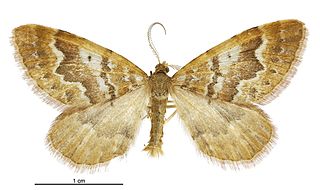
Asaphodes exoriens is a species of moth in the family Geometridae. This species is endemic to New Zealand and has been found in Central Otago. This is an alpine species and frequents open grassy habitat. They can also be found in upland wetland habitat at altitudes between 800 and 1100 m. Adults are on the wing in March.
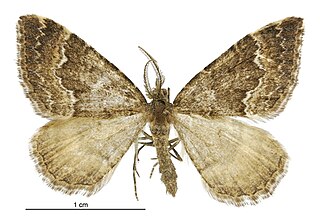
Asaphodes ida is a species of moth in the family Geometridae. It is endemic to New Zealand. This moth can be found in upland or alpine habitat in Canterbury and Otago. Although not classified under the New Zealand Threat Classification system this species is regarded as rare.
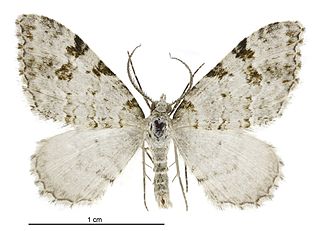
Helastia alba is a moth of the family Geometridae. This species is endemic to New Zealand and is found only in the South Island. This species inhabits native forest or scrubland and can be observed in montane to subalpine Nothofagus dominant forests. It has also been observed at lower altitudes in native podocarp forests. Larvae of this species have been raised on mosses. Adults are on the wing from November to January and are nocturnal. This species is very similar in appearance to other species in the genus Helastia but specimens can be distinguished by the dissection of their genitalia.
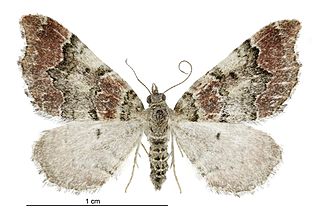
Helastia cryptica is a moth of the family Geometridae. It was first described by Robin C. Craw in 1987. This species is endemic to New Zealand and is found from mid Canterbury south. This preferred habitat of H. cryptica is native forest and scrub at altitudes ranging from lowland to subalpine. It has also been observed in human modified habitat. The larvae of this species has been observed on Melicytus alpinus, likely feeding on perched dead leaves and have been hypothesised as feeding on epiphytic mosses. Adults are nocturnal and are on the wing from November until January. Externally this species is indistinguishable from its close relative H. cymozeucta. However the distribution of these two species can assist in the correct identification of specimens.

Helastia ohauensis is a moth of the family Geometridae. This species is endemic to New Zealand.
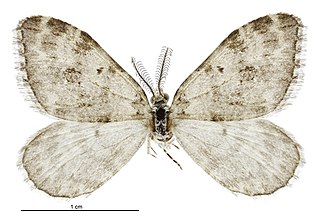
Helastia salmoni is a moth of the family Geometridae. This species is endemic to New Zealand.
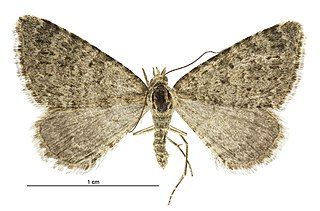
Helastia scissa is a moth of the family Geometridae. This species is endemic to New Zealand.

Helastia corcularia is a moth of the family Geometridae. This species is endemic to New Zealand and is found only in the South Island and the Chatham Islands. It inhabits a wide variety of habitats including native forest and scrubland, gardens, parks, subalpine and coastal areas. Larvae feed on herbs, lichen and moss. The adults of the species are on the wing from September until May and are nocturnal and attracted to light. H. corcularia is considered an orchard and pack house contaminant.
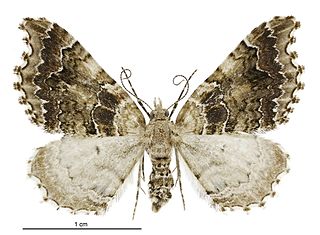
Helastia cymozeucta is a moth of the family Geometridae. It was first described by Edward Meyrick in 1913. This species is endemic to New Zealand and is found in both the North and the upper parts of the South Island. The adults of this species have been observed on the wing from November to January as well as in March.

Xanthorhoe orophylloides is a moth of the family Geometridae. It was first described by George Hudson in 1909 and is endemic to New Zealand. This species is found in the subantarctic islands including at the Auckland Islands and at Campbell Island.






















